How many times have we passed on the road A-4 city road Jaén and it will have caught our attention town with a beautiful castle that dominates the landscape.
Next time we stop, we usually say; Well, this time we decided to visit it, and it was really worth the stop on our route to visit the nearby ones. Ubeda y Baeza.
Baths of the Encina is in Sierra Morena , next Rumblar swamp in the Jaén province, and I tell you that in addition to a caliphal castle, has a beautiful church and a hermitage with an impressive baroque dressing room.
The name of Bathrooms comes from the aquifer richness of its subsoil, with natural sources and multiple wells, and of the Holm Oak, by tradition that tells that The Virgin He appeared on an oak tree.
In a first approximation to the attractions of Baños de la EncinaI will tell you that in the Plaza Mayor, nowadays called Constitution Plaza, you will find the Town Hall and church of San Mateo and some manor houses very nice.
In the center of the square, a source with the image of the Virgin of the Encina on top.
From there comes the Santa Maria Street, at the end of which is the Arch of the Benalúa that will take you to Bury al-Hamman castle, and in the opposite direction, the Hermitage and Camarín of Jesús del Llano.
It is curious to see how all the inhabitants of Baths of the Encina have been involved in collaborating in the conservation of its historical heritage, so that in 1969 it was declared Historic Artistic Set.
All the information in detail
The best things to see and do in Baños de la Encina
Below we detail some of the places we saw on our visit, but there are many more that justify visiting this beautiful town of Jaén.
Church of San Mateo in Baños de la Encina
La parish church of San Mateo It is from the 15th century and Gothic style.
Ordered to be built by king Ferdinand III, has two important access doors, the main one known as Door of Forgiveness, style mannerist with two shields above it, and the side door of Gothic Mudejar styleKnown as Puerta del Sol.

The bell tower with Renaissance finishes stands out, whose construction began with a circular base, but which was soon transformed into an octagonal prism.
You go up to the bell tower via a beautiful spiral staircase.
The church has a single nave 45 meters long and 20 meters high, with a magnificent altarpiece work of Francisco de Palma, which was done after the Spanish Civil War, since the previous one was destroyed, .
As a curiosity, I would like to tell you that the underground crypts were used during the aforementioned Civil War as an air raid shelter.
Another of the most significant pieces is the Baroque tabernacle, considered a jewel of cabinetmaking of Andalusian sacred art, which dates back to the 17th century and is built in ebony wood, ivory, silver and tortoiseshell shell.
It is said that the door of Sanctuary was painted by Murillo or artists from your school.
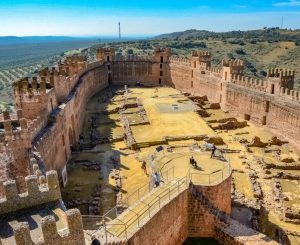
Both the pulpit and baptismal font They are from the 18th century and are made with red and black Cabra marble.
Baños de la Encina Castle
This is an impressive caliphal castle that dominates the panorama of Baths of the Encina and is considered as the oldest in Europe.
This castle has been preserved in its original state since the 2007th century, although it underwent a major renovation in XNUMX to protect the walls since a lot of earth had accumulated during the time it was used as a cemetery.
This reform brought to light remains of the different civilizations that have passed through this hill, from a roman mausoleum with remains of columns, until objects from the Iberian era.
ORGANIZE your TRIP
- Don't forget your TRAVEL INSURANCE with a 5% discount
- Book the HOTEL for your trip
- RENT a CAR for your trip
- The best TOURS and EXCURSIONS in Spanish
- NO-LINE TICKETS for museums and monuments
- Best FREE TOURS around the world
- Book your TRANSFER from the airport
- eSIM card with INTERNET at the best price
The name of the castle, Bury Al Hamman, Means bath tower, which is how it appears in medieval writings.
El Baños de la Encina castle It was initially intended to garrison the Berber troops fighting against the Christians.
It is built in tabiyya, a mixture of clay, sand, lime and very small stones, typical of Arab constructions, with a curious oval shape that resembles a boat, with a surface area of 100 meters long and 46 meters wide.
El castle It has 14 square towers, although originally there were 15, and two of them defend the entrance door, which is formed by a double horseshoe arch.
Later, on one of the original towers, the Christian tower of the Homenaje, with a semi-cylindrical shape and two floors, and with the entrance to it at the height of the first floor.
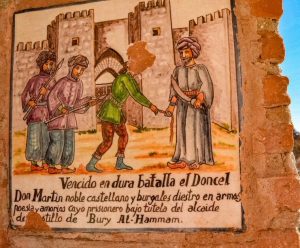
This tower that looks towards the interior of the town is also known as fat battlement, and it is a Christian modification, since in the muslim castles This type of tower did not exist.
From here you have beautiful views, both of the castle's parade ground and of the town of Baths of the Encina.
To see the castle you have to sign up for guided tours whose price is 3 euros, with a discount for children and seniors +65.
Here you have the information with schedules to visit the castle of Baños de la Encina.
Hermitage of Cristo del Llano in Baños de la Encina
This beautiful hermitage was built at the end of the 17th century in the upper area of the town, on an old cattle resting place.
Here you can sign up for one general guided tour of Baños de la Encina, in which in two hours you will visit the main corners, including the castle, and here you have other options of themed guided tours
The building shows a nave with a Latin cross plan, which is decorated with paintings that allude to the texts of the Gospel.
You will find the most important and spectacular thing inside, with a baroque rococo dressing room truly spectacular, which they say is one of the most beautiful in Andalusia.
The altarpiece communicates directly with the dressing room-tower which is open to the main nave by an arch from which the entire interior of the hermitage can be seen.
Once inside the dressing room you will find the image on the cross of the Christ of Jesus del Llano, which is the pattern of Baths of the Encina.
The image is surrounded by an impressive and exuberant ornamentation of polychrome plasterwork, almost 3.000 motifs are said to be in this dressing room.
There is not a single free space, everything is full of plant motifs, scrolls, angels, busts of the Virgin and saints, as well as portholes with real or simulated stained glass, and mirrors to reflect the light and give more grandeur to the space. .
The author is unknown, although it is attributed to sculptors of the Baroque school of Lucena y Cordoba.
Look at the ladder that comes out of the sacristy and the neo-Mudejar style access door to the dressing room, which is the original from the 18th century, which is carved in wood and has geometric motifs with small embedded mirrors.
Don't forget your Travel Insurance
Are you organizing your trip or getaway? Don't leave without take out your travel insurance before, and here we explain why. If you hire it with us, you have a 5% discount
A legend says that one night, while nailed Jesus del Llano on a solid silver cross, they disappeared from the hermitage, which was reported, but the Christ with their cross they did not appear.
One day a phosphorescent light began to be seen in a nearby landfill and the strange neighbors went to dig it up and try to see what was producing that light.
To everyone's surprise, they found the body of Christ and the cross broken into pieces.
Since then it was called the Christ of the Light, although today this name is almost not used, but there is still talk of the great luminosity that comes through the skylight of its dressing room.
And as a curiosity to tell you that, although the name of Christ of the Light is not preserved, it is very common to give the village girls the name of Maria de la Luz.

Santo Cristo Windmill in Baños de la Encina
You will find this 18th century La Mancha-style mill in the highest part of the town.
the tower of Baños de la Encina Windmill It is divided into three sections: the stable, the cabin and the room where the cereal was ground.
Inside you can see an exhibition called Stories of the wind, with the history of the mills and how cereals have been worked since the Neolithic until today.
Palaces in Baños de la Encina
Baths of the Encina has quantity of palace houses that you will find during your walk through its streets.
We highlight some of the most significant ones:
Palace house of the Molina de la Cerda family in Baños de la Encina
This house was built in 1724 and belonged to a family with great purchasing power, which belonged to the Holy Inquisition, as seen in the heraldic element in the upper window.
The façade is very sober, but the door is lintel and has two Tuscan columns on a pedestal on the sides.
This is the house that most represents the splendor of Baths of the Encina in this age.
Widows' House in Baños de la Encina
This palace house is in the Plaza Mayor in front of the building Town Hall of Baños de la Encina, and was built at the beginning of the 20th century with the money obtained during the mining boom in the town.
Palace of the Priors in Baños de la Encina
It is in the San Mateo street, Along the town hall and it is from the 17th century, and the priors resided there.
Book your hotel, 15% discount, free cancellation
When planning your trip, we advise you to, well in advance, Book your hotel now on booking.com where you can find discounts from 15% and you will have a possible cancellation for free
Its main façade is made of stone and the bars with rosettes stand out, as well as a room that overlooks the street, which was once a chapel.
Town Hall of Baños de la Encina
This building currently houses the Town Hall of Baños de la Encina and was built in the 16th century.
On this façade, the entrance stands out with a semicircular arch and a balcony with a roof with wooden beams at the top.

Its sober façade displays a royal coat of arms emblazoned with Carlos I.
House of the Delgado of Castile in Baños de la Encina
In this manor house, its cover stands out with a shield on the door lintel and two disc-shaped compositions with inscriptions on both sides.
The cornice is supported by two pilasters with geometric motifs.
But during your walk through this beautiful town of Jaén you will be able to see other palace houses, such as House of the Salido, House of the Torreón Poblaciones Dávalos and the House of Galindo, among others.
And finally, already outside the town, about four kilometers away you find the Hermitage of the Virgen de la Encina from the 13th century, which is also worth a visit.
Here you can sign up for one guided tour of Baños de la Encina, in which in two hours you will visit the main corners, including the castle
Map: how to get to Baños de la Encina
If you come From Madrid, Baths of the Encina You will see it on the right shortly before reaching Bailén, and it is 53 kilometers away. north of Jaén, near prominent towns such as Ubeda y Baeza.
Reserve your RENTAL CAR now for your trip
Looking ahead to your trip, book your rental car now on this website that offers you the best price guaranteed and allows you a possible free cancellation in most cases. Here you have more information with tips for renting a car


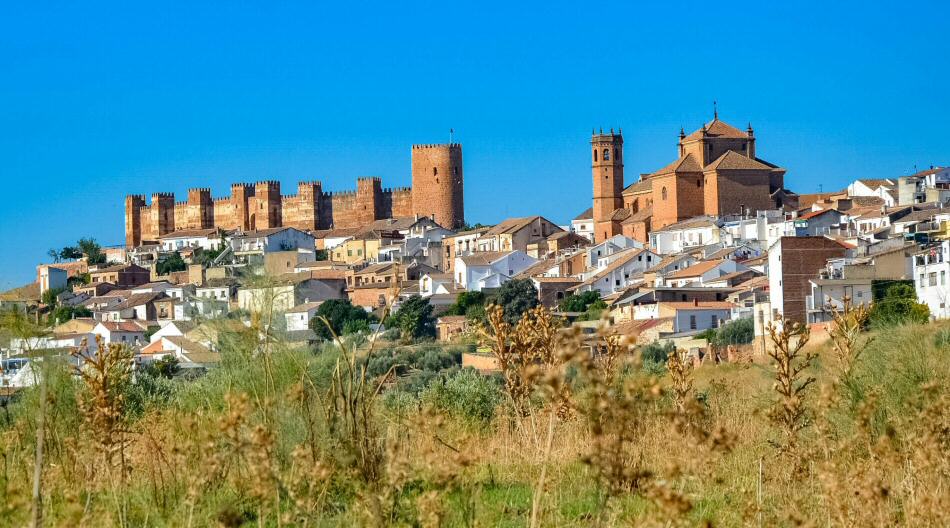

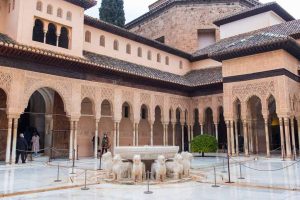
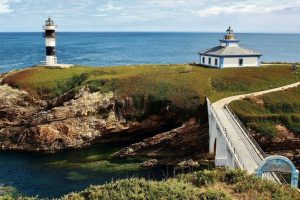











Comment